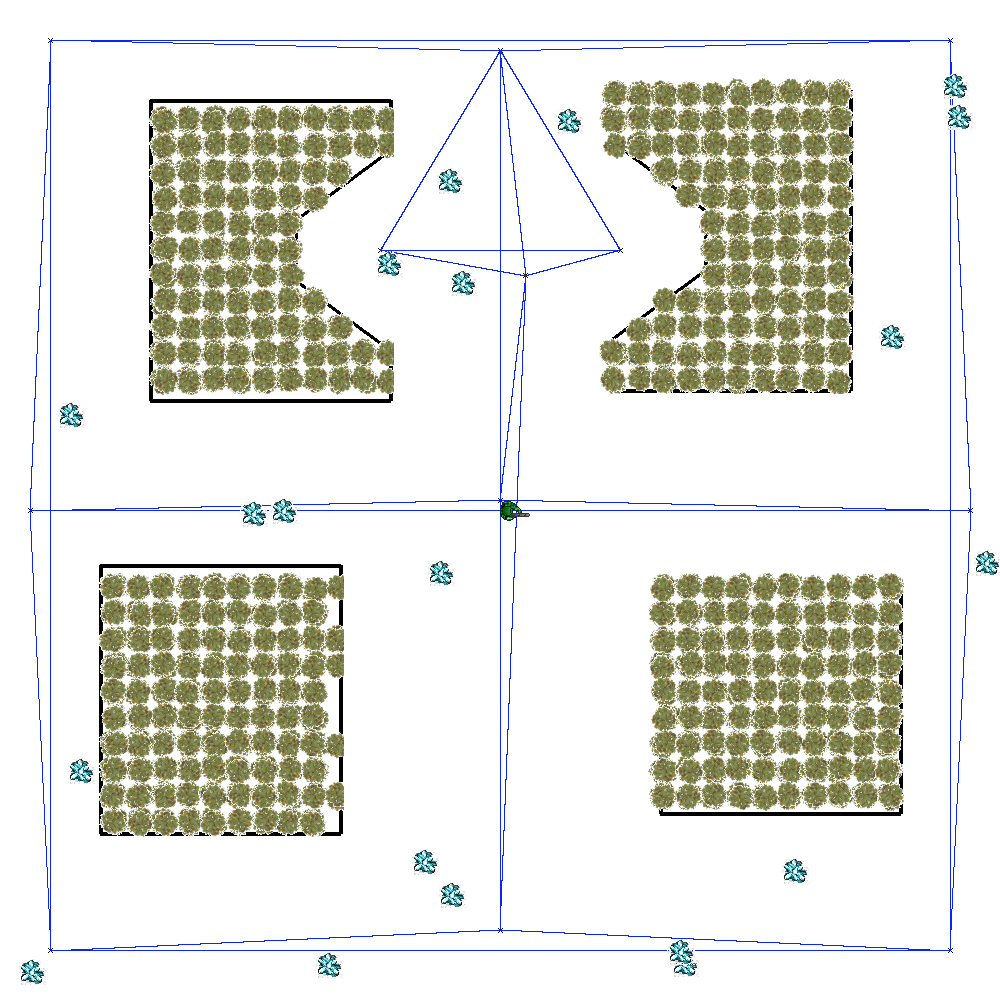
One of the main uses of artificial intelligence in games is to perform path planning, the search for a sequence of movements through the virtual environment that gets an agent from one location to another without running into any obstacles. For now we will assume static obstacles. In order for an agent to engage in path planning, there must be a topography for the agent to traverse that is represented in a form that can be efficiently reasoned about.
Grid topologies discretize the environment and assumes an agent can be in one discrete cell or another. However, for many games such as 1st-person shooters, a more continuous model of space is beneficial. Depending on the granularity of the grid, a lot of space around obstacles becomes inaccessible in grid-based approaches. Finally, grids result in unnecessarily large number of cell transitions.
A path network is a set of path nodes and edges that facilitates obstacle avoidance. The path network discretizes a continuous space into a small number of points and edges that allow transitions between points. However, unlike a grid topology, a path network does not require the agent to be at one of the path nodes at all times. The agent can be at any point in the terrain. When the agent needs to move to a different location and an obstacle is in the way, the agent can move to the nearest path node accessible by straight-line movement and then find a path through the edges of the path network to another path node near to the desired destination.
In this assignment, you will be provided with different terrains with obstacles and hard-coded path nodes. You must write the code to generate the path network, as a set of edges between path nodes. An edge between path nodes exists when (a) there is no obstacle between the two path nodes, and (b) there is sufficient space on either side of the edge so that an agent can follow the line without colliding with any obstacles.
We will test path network using a random-walk navigator that moves the agent to the nearest path node and then follows a randomly generated path---sequence of adjacent path nodes.
Please consult homework 1 for background on the Game Engine. In addition to the information about the game engine provided there, the following elements will be used.
PathNetworkNavigator is defined in core.py. A PathNetworkNavigator is a specialization of a Navigator that works on path networks and contains the smarts for how to get around in the game world. Its primary function is to compute a path between two points that steers the Agent clear of any obstacles.
Member variables:
Member functions:
RandomNavigator is defined in randomnavigator.py. The RandomNavigator causes the Agent to perform a random walk of the path network. The random path terminates after 100 path nodes and the Agent moves directly to its destination from the last random point reached. Thus, the Agent can possibly collide with obstacles if random path does not reach the destination before the threshold is reached.
Member functions:
Miscellaneous utility functions are found in utils.py.
To complete this assignment, you must (1) implement code to generate a path network for a set of given path nodes in a given terrain. The path network should guarantee that an agent will not collide with an obstacle between any starting point and any destination point in the world. Because we haven't gotten to the part where the Agent can be controlled intelligently, we will use a RandomNavigator, which walks randomly around for a while before proceeding directly to its destination.
To run the project code, use the following commands:
> python runrandomnavigator0.py
> python runrandomnavigator1.py
> python runrandomnavigator2.py
> python runrandomnavigator3.py
> python runrandomnavigator4.py
Step 1: Create the edges in the path network.
Modify mybuildpathnetwork.py and complete the myBuildPathNetwork() function. myBuildPathNetwork() takes in a list of pathnodes, a reference to the GameWorld object, and a reference to the agent doing the navigation. myBuildPathNetwork() must return a list of lines between any path nodes that should be considered adjacent. The list of lines must be computed such that each line originates and terminates at a path node (use shallow copies so the game engine can correlate the list of pathnodes and the list of edges) and an agent following the line will not collide with any obstacle.
We will grade your solution based on the following criterion:
Make sure any edge in the path network is traversable by an agent that has physical size. That is, edges in the path network should never come too close to any Obstacle such that an agent blindly following the path edge collides with an Obstacle (or the edges of the map).
To submit your solution, upload your modified mybuildpathnetwork.py. All work should be done within this file.
You should not modify any other files in the game engine.
DO NOT upload the entire game engine.